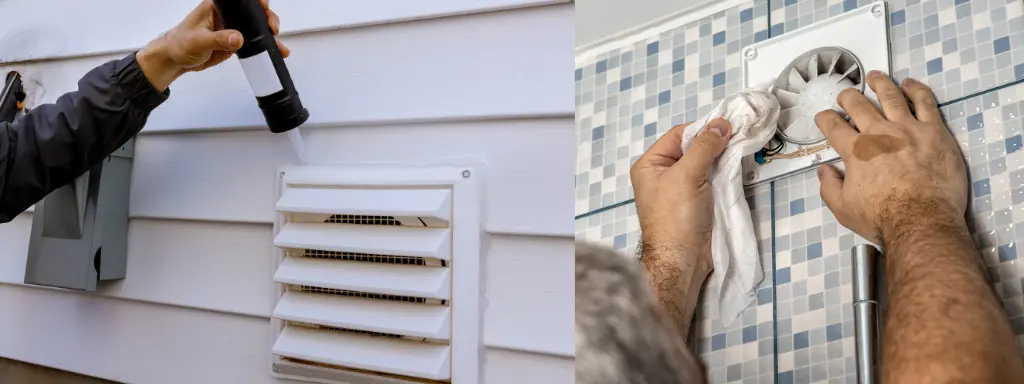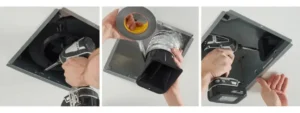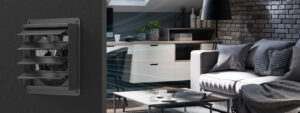Replacing your bathroom vent is an important task to improve air quality and keep humidity levels under control. Over time, exhaust fans may become noisy, stop functioning, or lose efficiency. Signs like excess moisture, persistent odors, and poor ventilation signal that it’s time for a replacement.
If you have basic knowledge of electrical systems and ventilation, this guide will help you choose and install a suitable replacement exhaust fan. You don’t need to be a professional contractor—just some patience, the right tools, and attention to detail can go a long way.
Why Replace Your Bathroom Vent?

Before starting the installation process, understand the benefits of a functional bathroom vent:
- Air Quality: A quality exhaust fan removes moisture and odors, refreshing the air in your bathroom.
- Mold and Mildew Prevention: Moist conditions can lead to mold growth. A properly working fan helps reduce this risk by regulating humidity.
- Energy Efficiency: Newer exhaust fans are designed to use less energy compared to older models.
- Improved Comfort: Older fans are often noisy and less effective. A new, quiet model can enhance your bathroom experience.
In addition to these benefits, replacing your fan is a smart investment in your home’s long-term health. A bathroom with poor ventilation can lead to peeling paint, warped wood, and even damage to drywall or ceiling fixtures. A modern fan keeps the space drier and more durable over time.
Learn more: Do You Really Need an Exhaust Fan
How to Replace a Bathroom Vent

Step 1: Choosing the Right Exhaust Fan
Selecting the right fan depends on your bathroom’s size and ventilation needs.
Key Factors to Consider:
- CFM (Cubic Feet per Minute): This measures the volume of air the fan can move. Bathrooms under 100 sq. ft typically need fans rated between 50–110 CFM.
- Noise Level: Choose a fan with a rating of 1.5 sones or less for quiet operation.
- Extra Features: Look for options like integrated lights, humidity sensors, or motion detectors.
Also, make sure the fan you choose complies with your local building code, especially if you’re upgrading from a very old unit. A proper match between the fan’s capacity and your bathroom’s size is crucial for efficiency.
Top Recommendation: For a powerful and ultra-quiet option, consider the Aircraft S18 Exhaust Fan. This model is ideal for both residential and commercial use.
Step 2: Turn Off Power and Remove the Old Fan
Important Safety Step:
Turn off the electricity at the circuit breaker before beginning work.
Remove the Old Fan:
- Take off the fan cover: Unscrew or unclip the old cover.
- Disconnect the wiring: Carefully detach the black (hot), white (neutral), and green (ground) wires.
- Unscrew the mounting bracket: Remove the fan housing from the ceiling joists.
If you see signs of rust or excess dust buildup, it’s a good indication that your old fan wasn’t doing its job properly.
Tip: Use a voltage tester to ensure wires are not live. If unsure, consult a licensed electrician.
Step 3: Install the New Exhaust Fan
With the old fan removed, it’s time to install the new one.
Installation Steps:
- Secure the Mounting Bracket: Align it with ceiling joists and screw it into place.
- Connect the Wiring: Match the new fan’s wires—black to black, white to white, and green to ground.
- Seal the Housing: Apply caulk around the housing to reduce air leaks and improve efficiency.
- Mount the Fan: Use screws to fix the unit securely to the ceiling.
Double-check all connections before restoring power. If your fan has a damper flap, make sure it opens and closes freely—it helps prevent backdrafts.
Step 4: Test Your New Fan
Turn the circuit breaker back on and test the fan:
- Listen for unusual sounds or vibrations.
- Check airflow by holding a tissue or piece of string near the vent.
- If you’ve installed a fan with lights or sensors, test those functions too.
A properly installed fan should be barely noticeable in sound but effective in clearing out steam quickly.
Step 5: Reattach the Fan Cover
Once everything works correctly, reattach the cover. Some covers snap in; others may need to be screwed in place.
Wipe the cover clean before putting it back to remove dust or fingerprints—it’s a small touch, but it helps keep things looking fresh.
When to Choose a Crawl Space Vent Fan
If your bathroom is located over a crawl space, moisture can seep into the foundation. Installing a crawl space vent fan like the Airbird T10 helps direct moisture away and protects against mold and structural damage.
These fans are especially helpful in homes located in humid climates or where poor drainage is an issue. Think of it as an added layer of moisture defense.
Tips for Maintaining Your New Bathroom Vent
Routine care keeps your fan running efficiently.
- Clean Regularly: Dust blades every few months with a soft cloth or vacuum.
- Inspect Ducts: Make sure airways aren’t blocked.
- Lubricate if Needed: Some fans require occasional motor lubrication—check your model’s manual.
Why Choose Our Exhaust Fans?
We offer high-performance, durable fans for every home. Our models, like the Aircraft T8 Quiet Cooling Fan System, are energy-efficient, easy to install, and built to last. Whether you need a cabinet exhaust fan or a crawl space ventilation solution, we have you covered.
Our customer support team is also available to guide you through selection and installation. Your satisfaction is our priority.
FAQs
Q1: How do I know which CFM rating is right for my bathroom?
A: Bathrooms under 100 sq. ft generally need a 50–110 CFM rating. Larger bathrooms require higher CFM fans.
Q2: Can I install the exhaust fan myself?
A: Yes—if you’re familiar with basic electrical work. If not, it’s best to hire a professional.
Q3: What are the benefits of a crawl space vent fan?
A: It removes excess moisture, protects the foundation, and improves indoor air quality.
Q4: How often should I clean the bathroom exhaust fan?
A: Every 3 to 6 months, depending on dust and humidity levels in your home.
Q5: Is it normal for a new exhaust fan to smell during the first use?
A: Yes, a slight smell is common as the motor coating burns off. It should disappear after a few uses.
Q6: Can I connect the fan to a timer switch?
A: Yes, many modern exhaust fans are compatible with timer switches, allowing you to set automatic shutoff times for energy efficiency.
Conclusion
Replacing your bathroom exhaust fan can improve ventilation, comfort, and energy efficiency. With the right fan and a bit of DIY effort, you’ll enjoy cleaner air and fewer moisture issues.
Explore our collection of top-rated bathroom fans—from the Aircraft S18 to the Airbird T10 Crawl Space Fan—and find the perfect solution for your space. A few hours of work today can save you costly repairs down the road.





